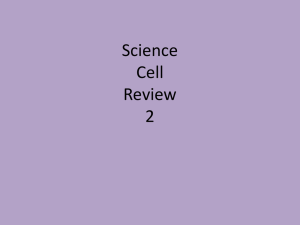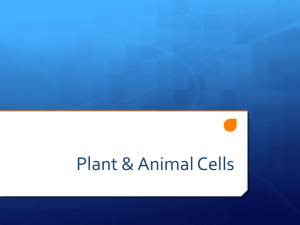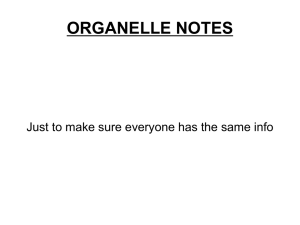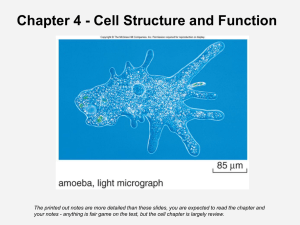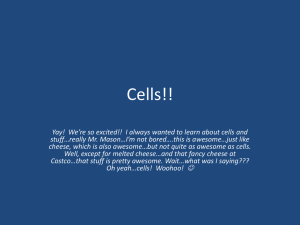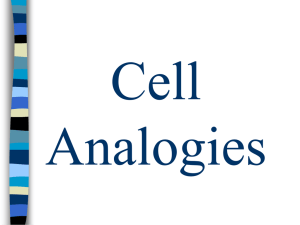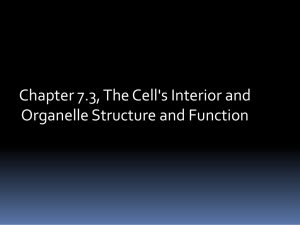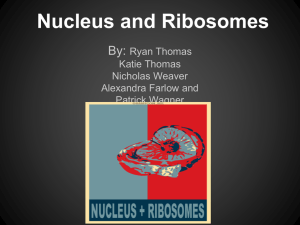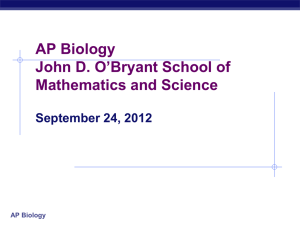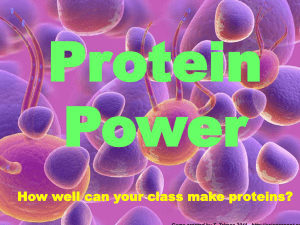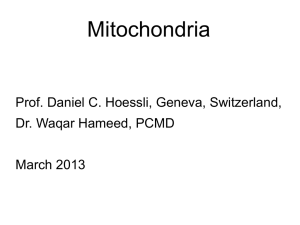Cell Organelles
advertisement
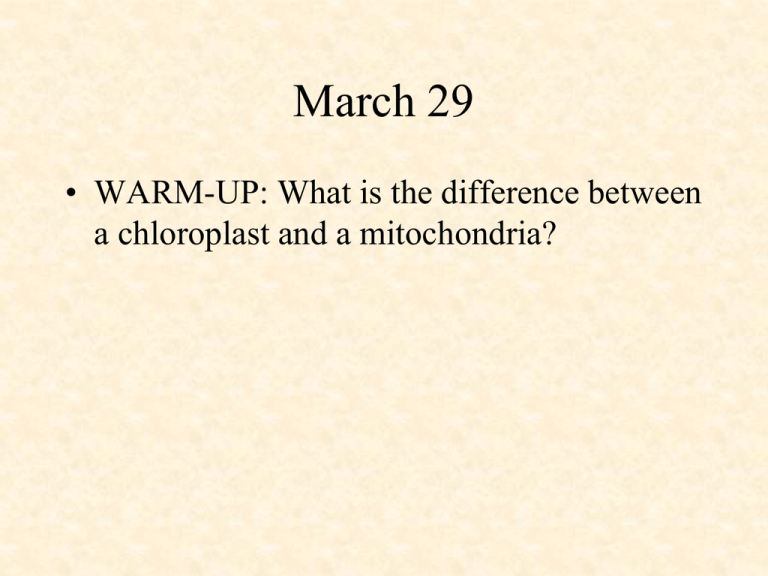
March 29 • WARM-UP: What is the difference between a chloroplast and a mitochondria? Cell Organelles CA Standards Cell Biology • 1.e. Students know the role of the endoplasmic reticulum and Golgi apparatus in the secretion of proteins. • 1.f. Students know usable energy is captured from sunlight by chloroplasts and is stored through the synthesis of sugar from carbon dioxide. • 1.g. Students know the role of the mitochondria in making stored chemical-bond energy available to cells by completing the breakdown of glucose to carbon dioxide. Nucleus of a Cell The Nucleus The Nucleus • The nucleus controls most cell functions and contains the cell’s DNA. • Think of it like “the brain” of the cell! The nucleolus is in the nucleus. • Ribosomes are assembled in the nucleolus. The nucleus is surrounded by the nuclear envelope. • The nuclear envelope is a membrane that is made of 2 lipid bilayers. Nuclear pore • Nuclear pores are small channels in the nuclear envelope. • They allow nuclear material to pass through to the cytoplasm. Ribosomes • Ribosomes are the cellular structures on which proteins are made. • Making proteins is one of the most important jobs of a cell. Ribosomes • Cells make proteins on ribosomes. • Free ribosomes make proteins to build new organelles. Ribosomes Rough Endoplasmic Reticulum A system of internal membranes that helps make and then move proteins throughout the cell. Smooth ER • No ribosomes • Makes lipids for the cell membrane Processing Proteins 1. Proteins are made by ribosomes on the rough ER. Processing Proteins 2. Vesicles (pouches) carry proteins from the rough ER to the Golgi Apparatus Golgi Apparatus Enzymes in the Golgi Apparatus attach carbohydrates and lipids to proteins. The proteins are then shipped to their final destinations. Processing Proteins 3. Proteins are modified in the Golgi apparatus and enter new vesicles (pouches) to be carried outside the cell. • Lysosomes contain enzymes that break down organelles that aren’t working. • Think of them as the “cleanup” crew! Lysosome digesting an old mitochondria. Mitochondria (plural) Mitochondrion (singular) Heart muscle cell- Mitochondria are stained green • Uses energy from food to make ATP (a high-energy molecule), which the cell uses for growth, development and movement. • Muscle cells have high energy requirement and contain a lot of mitochondria. Mitochondrial • Mitochondria also have DNA and ribosomes and make their own DNA protein. • Mitochodrial DNA is independent of nuclear DNA. • Primitive prokaryotes may be the ancestors of mitochondria, according to the Endosymbiont Hypothesis. Lynn Margulis proposed the Endosymbiont Hypothesis Unique features of plant cell 1. Cell wall 2. Chloroplasts 3. Central vacuole Unique features of plant cell: Cell Made of proteins and carbohydrates including cellulose. Gives cell support and shape. wall Unique features of plant cell: Use the sun’s energy to make glucose during photosynthesis. Chloroplasts Chloroplasts Unique features of plant cell: Central vacuole A sac-like structure that stores water, salts, proteins and carbohydrates. Helps plant maintain its turgor pressure, which keeps the plant upright and supports heavy flowers and leaves. Review Describe the role of the nucleus in cell activities. Sequence the course of newly made proteins from the rough ER to the outside of the cell. Describe the role of mitochondria in the metabolism of eukaryotic cells. Explain how a plant cell's central vacuole and cell wall help make the cell rigid. Critical Thinking Inferring Relationships What is the importance of a cell enclosing its digestive enzymes inside lysosomes? Standardized Test Prep Which organelle serves as the packaging and distribution center of a eukaryotic cell? A nucleus B lysosome C mitochondrion D Golgi apparatus
